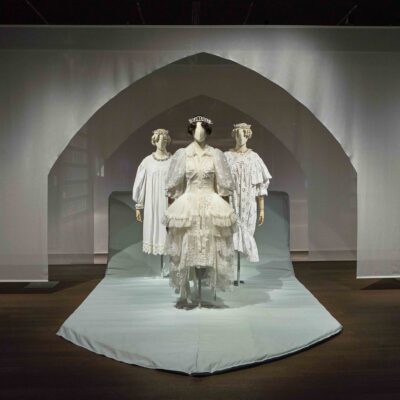
Exhibitions 21.11.2025
10.05.2022
European fashionfashion and musicfashion historytraditional costume
We partnered up with Beeld & Geluid – The Netherlands Institute for Sound and Vision to gather some curiosities about Europe’s favourite song contest
In 1956, Inspired by the success of the Italian Sanremo Music Festival established in 1951, the European Broadcasting Union decided to develop a similar music contest that could gather the best talents of all European nations and let them represent their country on the same stage. This is how Eurovision was born: as a showcase of European talent, diversity and identity through music. It came at a moment in which europe was still shaken by WW2 and dealing with its aftermath, its aim being also to foster contact and collaboration between the different countries.
Since then, Eurovision has been held once a year – with a hiatus in 2020 – and each edition has seen the participation of singers and artists that pushed the boundaries not only with their music, but also with their fashion choices.
In 1968, Spanish artist Massiel brought the ‘mini’ trend on stage, wearing a short white dress designed by André Courrèges. This style was very popular at the time, and Massiel, winning the contest, was identified as the voice of her generation.
Clothes have been used to signal belonging and national pride. In 1971, Monique Melsen performed her song ‘Pomme Pomme Pomme’ for Luxembourg, at the Eurovision Song Contest in Dublin. Clad in stockings and short lederhosen, she homage her country and her heritage. Since then, the use of elements from national costume has become a current practice during the contest, and fashion designers collaborate with the artist to craft outfits that are both beautiful and significant.
Eurovision has also been a stage where international styles were perfected and appropriated by famous performers: in 1974, Abba won the competition with the song ‘Waterloo.’ The unforgettable costumes were designed by Inger Svenneke, who defined the identity of the group through flounces and sequins, giving a European spin to disco dance styles.
The Eurovision stage has also served as platform to advocate in favour of oppressed groups and minorities, contributing to social advancement. In 1998 Dana International became the first trans performer in the contest. She took the Birgmiingham stage by storm, winning with her song ‘Diva’ – a title and a statement that became even more apparent when she received the prize proudly wearing a Jean Paul Gaultier dress with rainbow feathers from the designer’s 1997 collection.
It is very interesting that Austrian singer and drag queen Conchita Wurst, who won the Eurovision Song Contest 2014 with the song “Rise Like a Phoenix”, walked the Jean Paul Gaulter runway wearing a couture gown inspired by Austrian traditional costumes.
We cannot wait to see what this new edition will bring on the table, and we expect no less than great music, great fun, and great fashion.